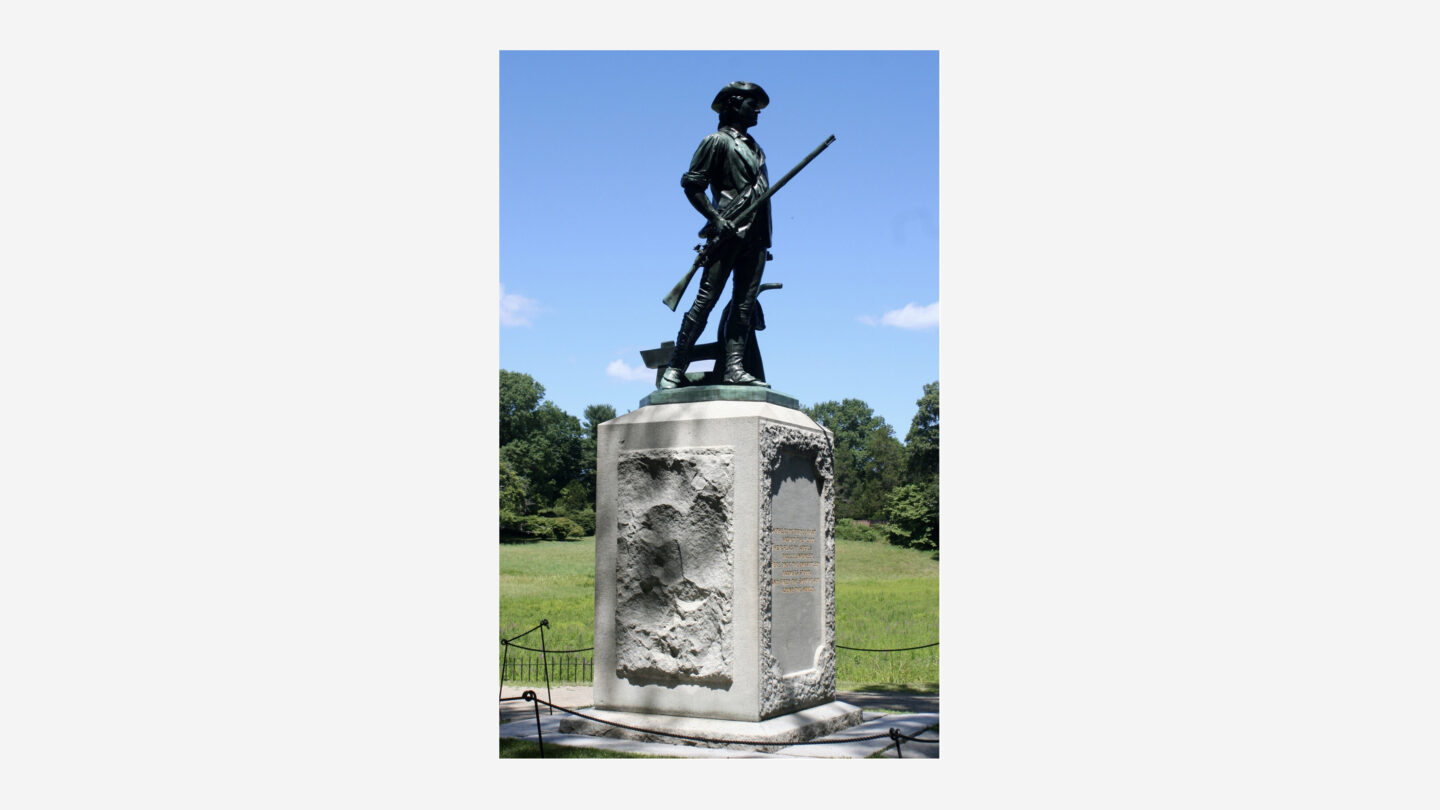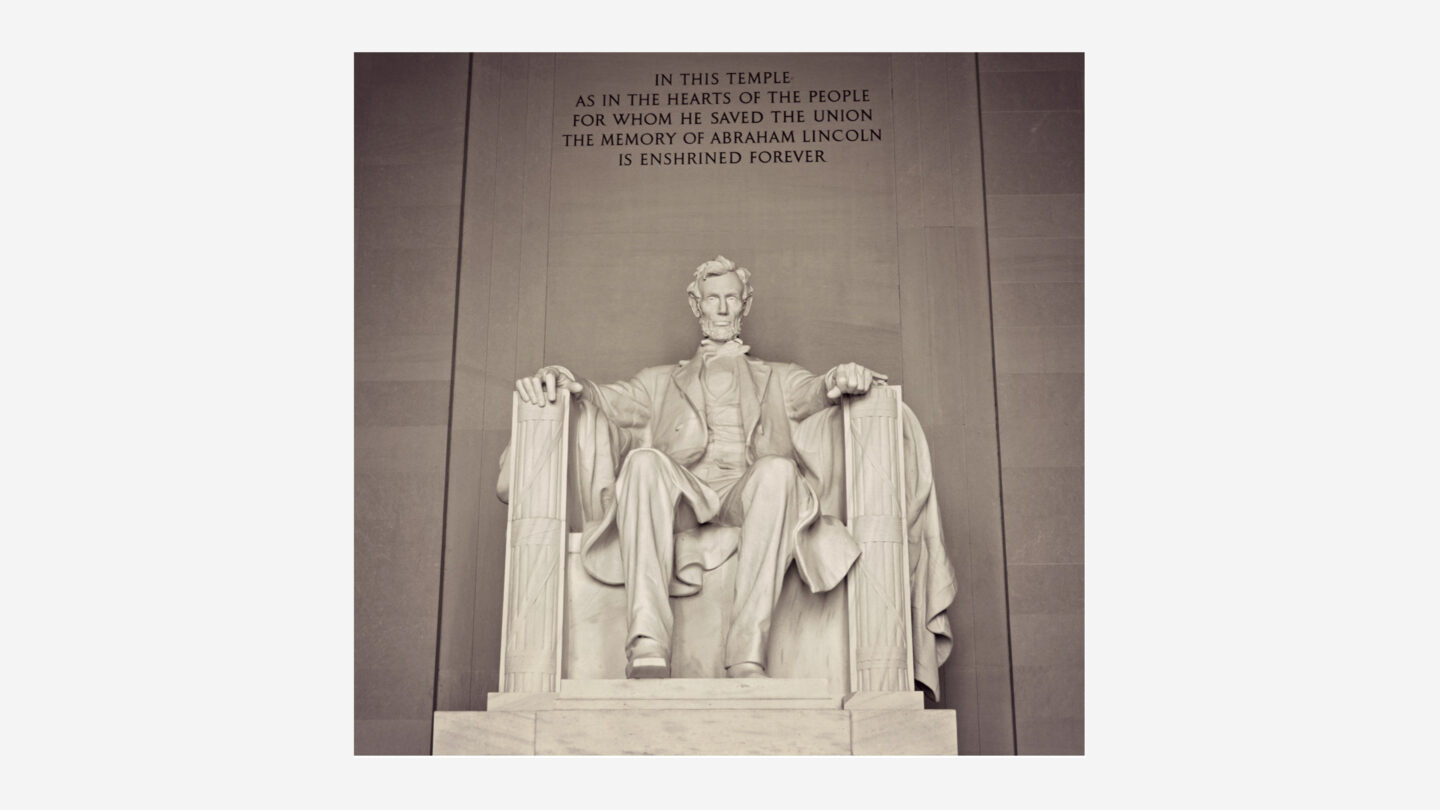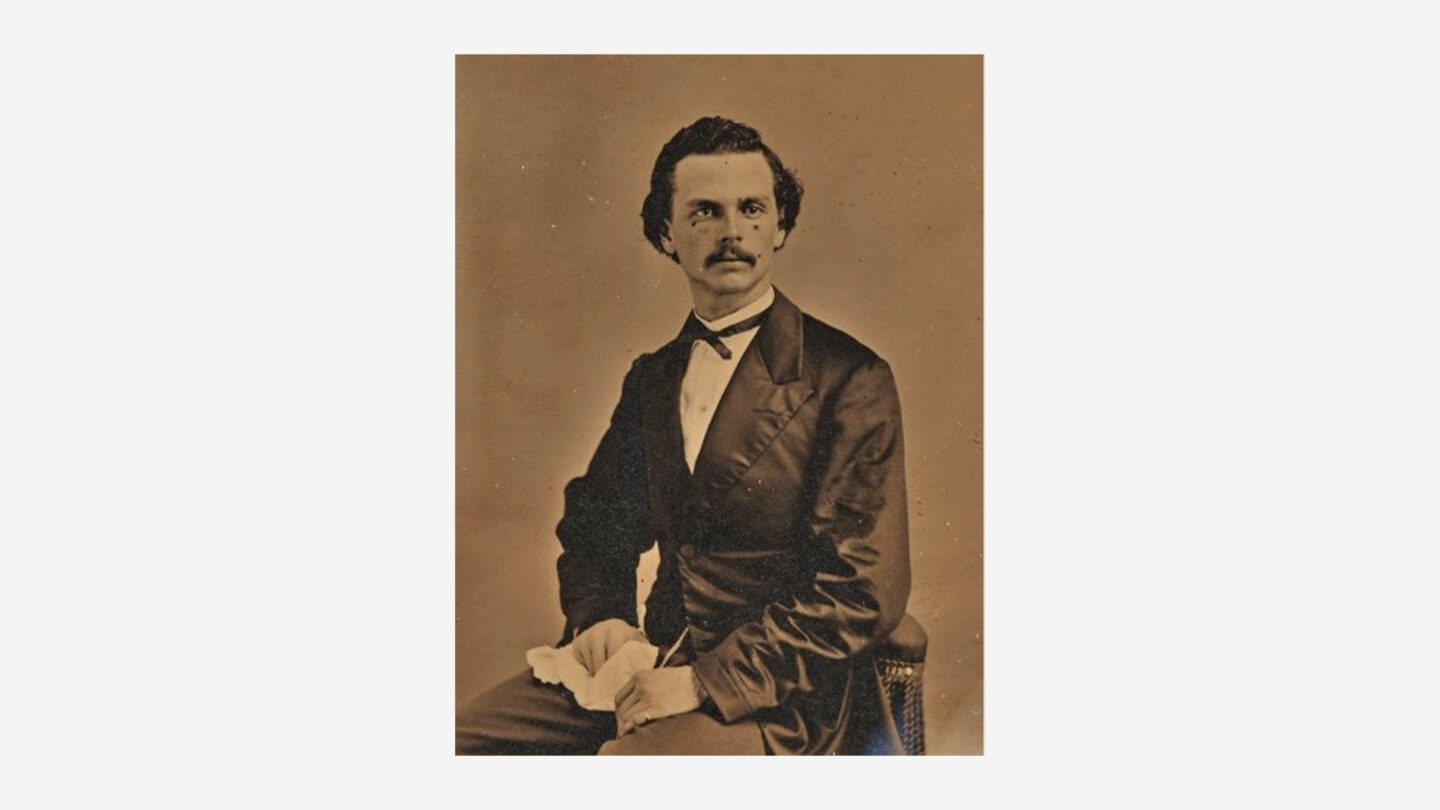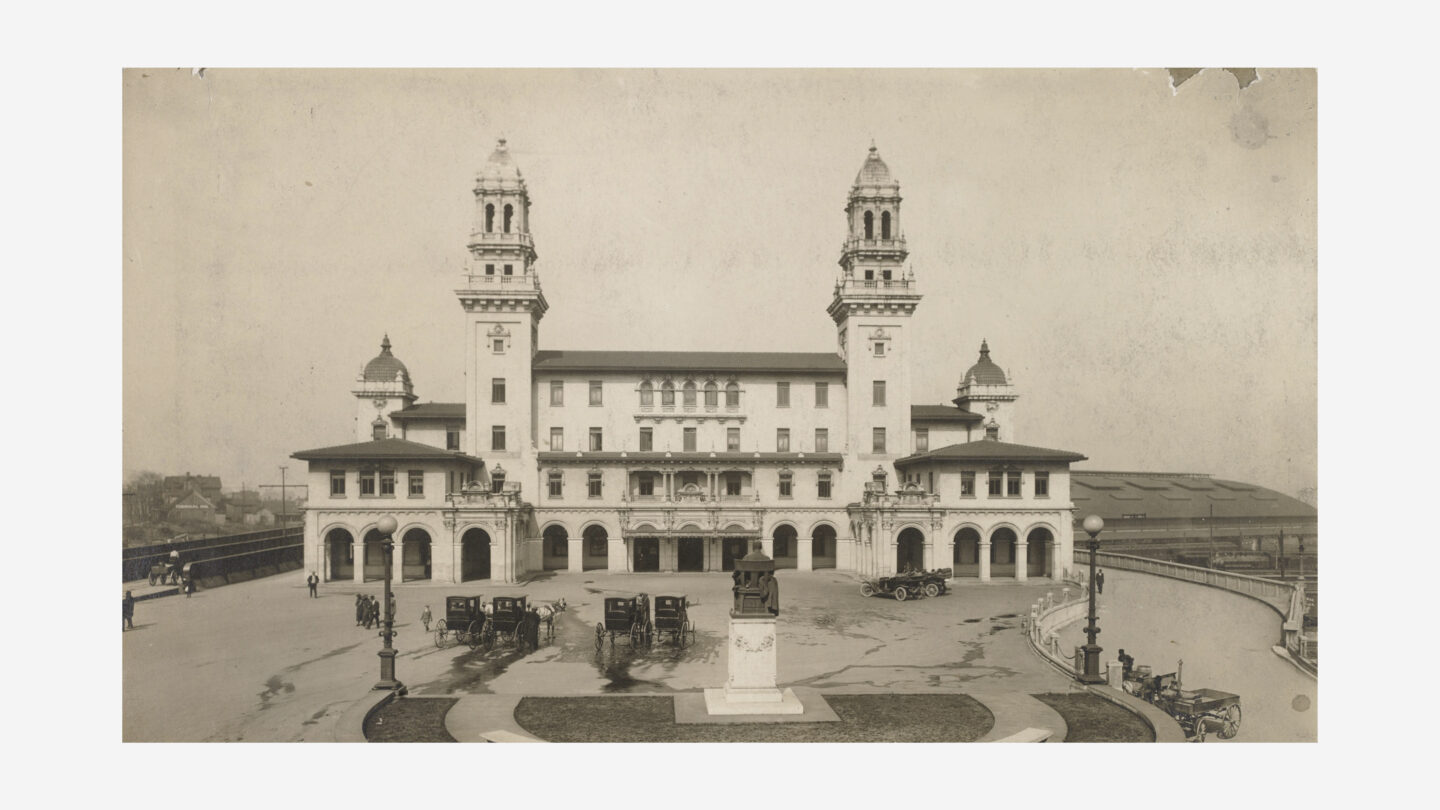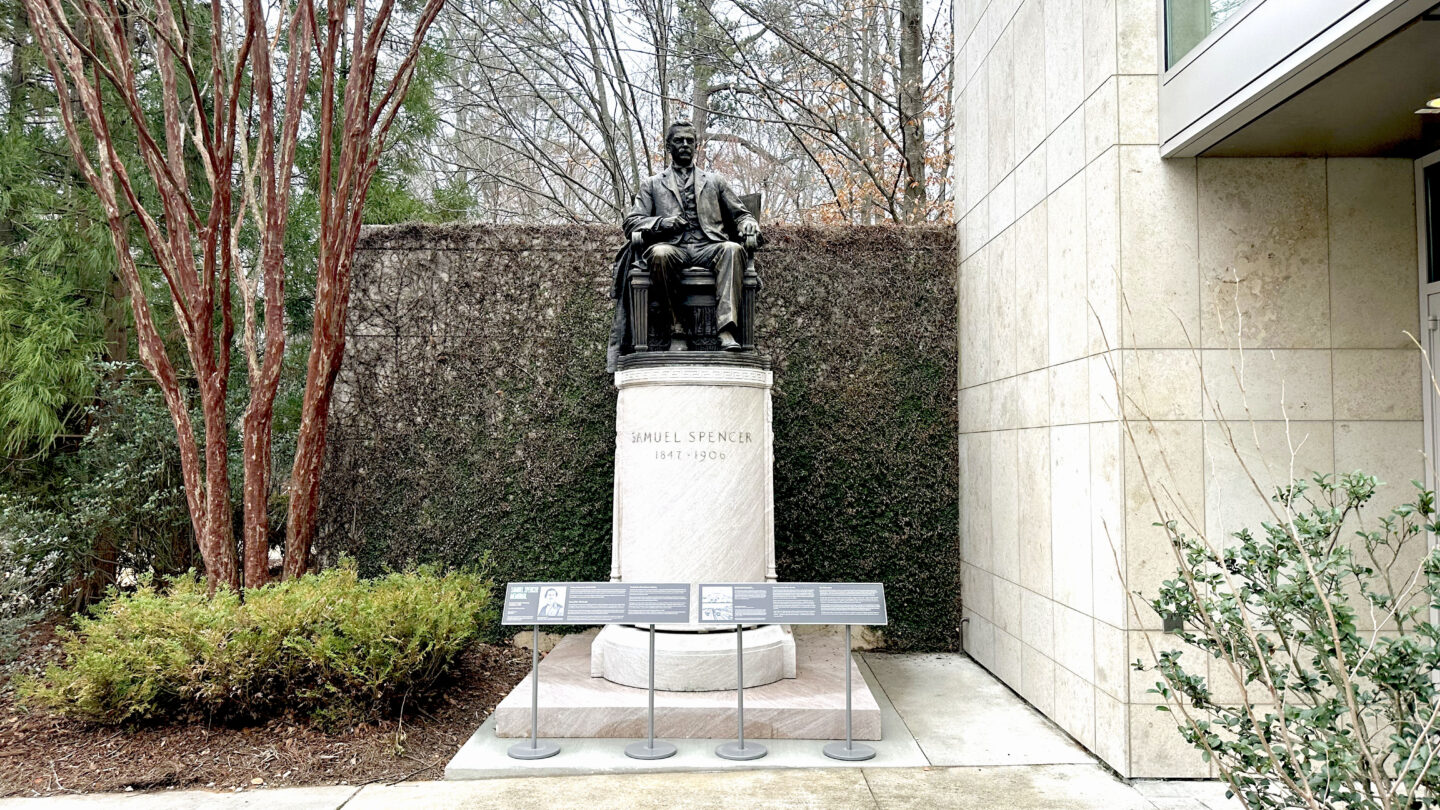
The Samuel Spencer Memorial was placed on display at Atlanta History Center in December 2023. Its placement is intended to help to promote discussion about Samuel Spencer, public art, and the complex legacies of the Old and New South.
Created by the same team of artists behind the Lincoln Memorial in Washington, D.C., the memorial includes a bronze statue done by renowned sculptor Daniel Chester French. It depicts Samuel Spencer, who organized the Southern Railway.
Originally sited at Atlanta Terminal Station, the memorial was paid for by contributions from Southern Railway’s employees following Spencer’s death in a train wreck on his own railroad in 1906. It was dedicated in 1910.
The Samuel Spencer Memorial has a lengthy history in Atlanta—a city which sat at the center of the Southern Railway.
Who Was Samuel Spencer?
The inscriptions on the marble base of the Samuel Spencer Memorial read:
Samuel Spencer
1847–1906
A Georgian, a Confederate soldier,
first president of Southern Railway Company.
Erected by the employees of that company.
The memorial’s journey to Atlanta History Center began with research. That work revealed that Spencer’s life was a far more complex story than what can be chiseled into a stone epitaph.
Manuscript collections (including personal letters housed at Atlanta History Center’s Kenan Research Center and at the University of North Carolina at Chapel Hill) made it clear that that Spencer was among the most successful Southern—and indeed American—businessmen of the late-19th and early-20th centuries.
The records also revealed that Spencer’s story is one of a New South emerging from the Old South after the Civil War.
Born In the Old South
Samuel Spencer was rooted in the Old South. Born in 1847 in Columbus, Georgia, Spencer joined the Confederate Army in 1863 at age 16. His father sent one of the family’s four enslaved people, a 17-year-old named Len, to be Samuel’s personal servant during the war. Union victory in 1865 made Len a free man.
After the war, pro-Confederate biographers emphasized Spencer’s wartime service. His military service is specifically mentioned on the back of the monument base. Records show that as headquarters guard for General Stephen D. Lee, Spencer’s cavalry company saw little or no combat.
After the war, Spencer attended the University of Georgia where he founded the university’s first social fraternity, Sigma Alpha Epsilon, in 1865. Spencer graduated from the University of Georgia in 1867 and trained as a civil engineer at the University of Virginia, where he graduated in 1869.
President of Southern Railway
Spencer began his railroad career on a surveying crew for the Savannah & Memphis Railroad in 1869. He had stints at the Baltimore & Ohio Railroad, Long Island Rail Road, and others. He worked in positions of increasing responsibility, served as president of several railroads, and became a railroad advisor to New York financier J.P. Morgan in 1889.
Spencer seized an opportunity when the Richmond & West Point Terminal Railway and Warehouse Company went bankrupt. In 1894, with Morgan’s financial backing, Spencer amalgamated the company’s small railroad lines into a large network he named Southern Railway.
Under Spencer’s leadership, Southern Railway grew into a powerful force in the transportation industry, with 7,500 miles of track serving 14 states in the South and Midwest. Although Southern Railway was headquartered in Washington, D.C., the hub of its railroad network was Atlanta, and its operations center was an office building complex at 99 and 125 Spring Street in downtown Atlanta.
Southern Railway merged with Norfolk & Western Railway in 1982 to create Norfolk Southern Corporation. In 2022, the company, now headquartered in Atlanta, donated its collection of Southern Railway records to Kenan Research Center at Atlanta History Center.
New South Businessman
Samuel Spencer championed bringing new businesses to the South, particularly to cities and towns along the railroad lines owned by Southern Railway. Economic development created thousands of well-paying jobs for white and Black Southerners, diversified the economy, and generated much-needed capital and industrial infrastructure for the region. Southern Railway made Samuel Spencer one of the richest men in the South.
At the same time, the social and racial hierarchy of the Old South remained largely intact and was supported through state laws. As with all railroads in the South, Southern Railway operated segregated “Jim Crow” cars for Black passengers on its passenger trains. Railroad craft unions reserved the best jobs for white male workers. Black workers had access to crucial yet lower-paying positions.
Samuel Spencer died in a train collision on Southern Railway in Virginia in 1906 at the age of 59, when one train slammed into the rear of the one Spencer was riding on. A coupler between cars had broken and Spencer’s train could not clear the main track in time for another train approaching from behind. It was a gruesome crash, with Spencer’s body winding up under the wheels of the locomotive of the other train.
Daniel Chester French and the Samuel Spencer Memorial
Spencer was a popular leader among the rank and file at Southern and his death was viewed as a tragedy by many. Seeking to memorialize their well-regarded company leader—a group of Southern Railway employees created a committee to oversee the creation of a memorial to Spencer. The effort grew to include 30,000 employees of the Southern Railway—some three-quarters of its workforce—who contributed to the Spencer monument fund.
The committee selected Daniel Chester French (1850-1931) to create the memorial. French was the preeminent public sculptor in the United States in the early 20th century.
French first earned national recognition in 1874 with the unveiling of his iconic The Minute Man in Concord, Massachusetts. Over his long career, French created at least 40 major outdoor works of art and many other smaller statues, busts, and memorials. French’s works include equestrian statues of George Washington in Paris and Ulysses Grant in Philadelphia, and the monument to Marquis de Lafayette in Washington, D.C. French is most famous for his majestic 1920 Abraham Lincoln in the Lincoln Memorial in Washington, D.C.
Two other sculptures by French are located in Georgia: the 1910 bronze statue of James Edward Oglethorpe in Savannah, and the 1924 marble “Spirit of Achievement” memorial to Jesse Parker Williams in Westview Cemetery, Atlanta.
French created bronze statue of Samuel Spencer in 1909-1910 at his Chesterwood Studio in Massachusetts. The marble base was designed by architect Henry Bacon and built by the Piccirilli Brothers marble carvers. The same team designed and constructed Abraham Lincoln in the Lincoln Memorial (Bacon also served as the architect for the marble structure which houses the statue).
Southern Railway gave the Spencer Memorial a prominent place on the heavily travelled plaza of Atlanta Terminal Station, one of the two main train stations in Atlanta. Following closure of Terminal Station in 1970, the statue was relocated to Peachtree Station in Atlanta’s Brookwood neighborhood. It was later moved to Hardy Ivy Park and subsequently placed in front of a Norfolk Southern building in Midtown.
In 2023, Atlanta History Center licensed the Samuel Spencer Memorial from its owner, the City of Atlanta. The memorial is now on display in a courtyard outside of the Museum building, where other Atlanta architectural elements (including 3 columns from the Equitable Building) are displayed.
Under Samuel Spencer’s direction, Southern Railway constructed the state-of-the art Atlanta Terminal Station in 1905 under the auspices of the Atlanta Terminal Station Company. Designed by architect P. Thornton Marye, the passenger station served Southern Railway trains as well as those of Central of Georgia Railway, Atlanta & West Point Rail Road, and Seaboard Air Line Railway. The Spencer memorial is visible at the bottom center of the photograph facing the station. The Downtown landmark was demolished in 1972 and is now the site of the Richard B. Russell Federal Building.
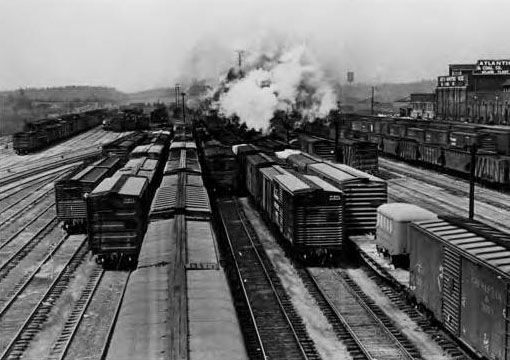
Inman Yard, circa 1940
Kenan Research Center at Atlanta History Center
Southern Railway built and maintained yards across the South where freight cars were sorted and trains were assembled. One of its largest was Inman Yard located along Marietta Road south of Bolton and named for Atlanta businessman Samuel M. Inman. Southern Railway also operated South Shops, later known as Pegram Shops, a locomotive repair facility in Mechanicsville just south of downtown Atlanta.
Samuel M. Inman was the uncle of Edward H. Inman. In 1928, Edward and Emily Inman built Swan House on the property of Atlanta History Center.


